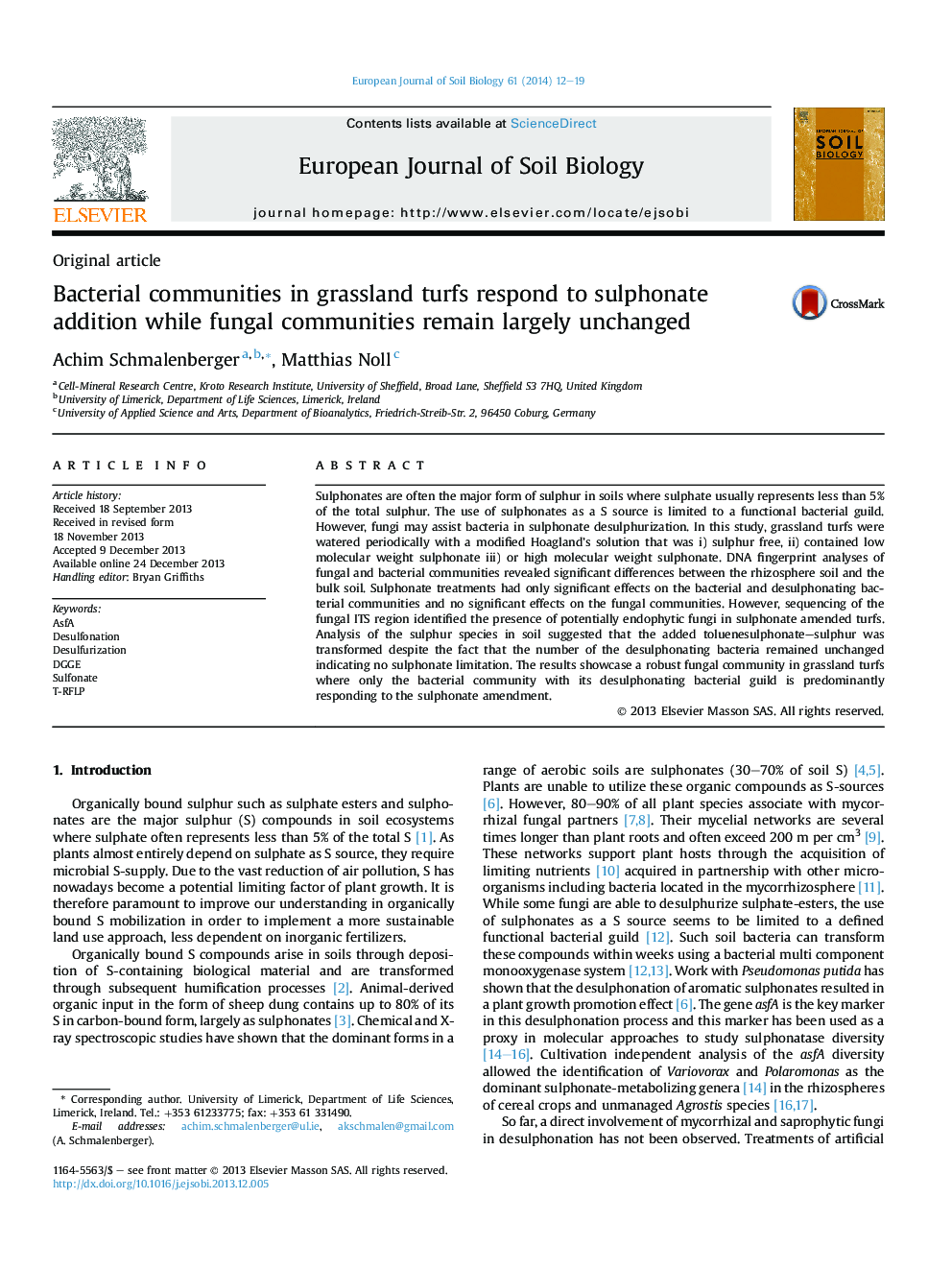| Article ID | Journal | Published Year | Pages | File Type |
|---|---|---|---|---|
| 4391877 | European Journal of Soil Biology | 2014 | 8 Pages |
•Sulphonate addition shifted bacterial and desulphonating communities significantly.•Sulphonate addition had no significant effect on the fungal communities.•A rhizosphere effect was detected in all microbial communities.•XANES results suggest that added toluenesulphonate was transformed.•Presence of potentially endophytic fungi in the sulphonate treatments was detected.
Sulphonates are often the major form of sulphur in soils where sulphate usually represents less than 5% of the total sulphur. The use of sulphonates as a S source is limited to a functional bacterial guild. However, fungi may assist bacteria in sulphonate desulphurization. In this study, grassland turfs were watered periodically with a modified Hoagland's solution that was i) sulphur free, ii) contained low molecular weight sulphonate iii) or high molecular weight sulphonate. DNA fingerprint analyses of fungal and bacterial communities revealed significant differences between the rhizosphere soil and the bulk soil. Sulphonate treatments had only significant effects on the bacterial and desulphonating bacterial communities and no significant effects on the fungal communities. However, sequencing of the fungal ITS region identified the presence of potentially endophytic fungi in sulphonate amended turfs. Analysis of the sulphur species in soil suggested that the added toluenesulphonate–sulphur was transformed despite the fact that the number of the desulphonating bacteria remained unchanged indicating no sulphonate limitation. The results showcase a robust fungal community in grassland turfs where only the bacterial community with its desulphonating bacterial guild is predominantly responding to the sulphonate amendment.
